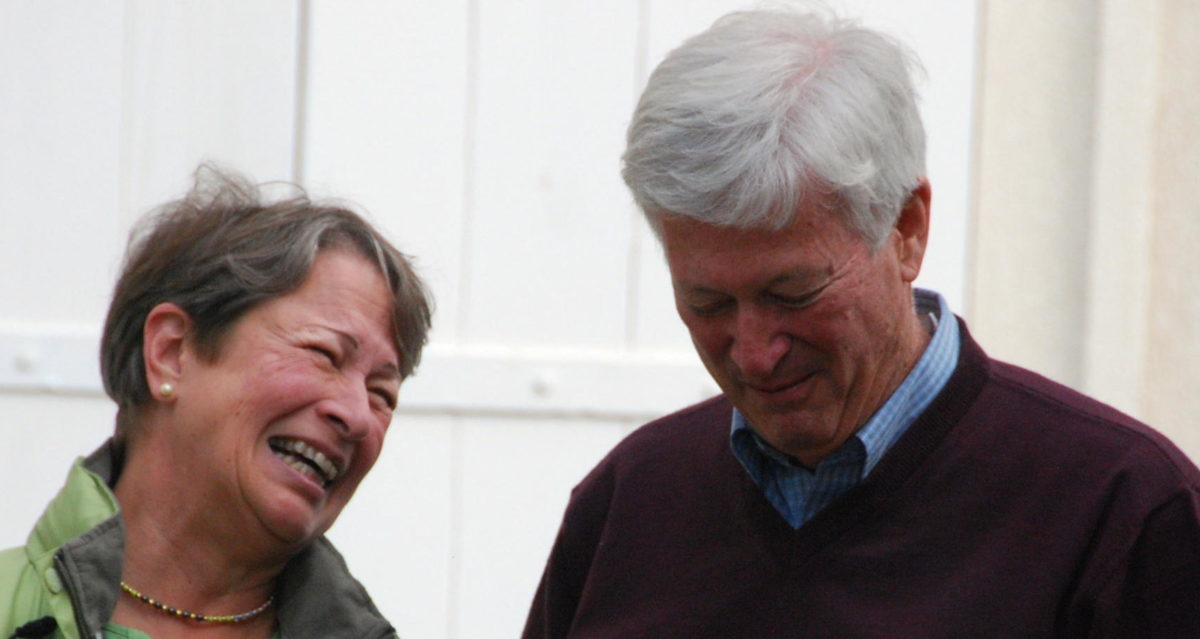After a brief stop in PARAZA (Languedoc) to visit our friends Marie-Jose & Harry, at their chambre d’hôte, Domaine Méditerranée, we’ve now moved on to Spain. Our last few days in France were extremely windy (25-35mph!). Even the picturesque plane trees were swaying!

But, as soon as we crossed into Spain, on the other side of the Pyrenees, the wind was gone!
First stop, GIRONA. About an hour north of Barcelona, we are in the heart of Catalonia. This was brought starkly to our attention when, on our first full day in town, the government called a general strike and everything was closed…museums, historic sites, most shops and grocery stores, all shuttered. We didn’t observe any demonstrations, but saw a number of flag-draped people walking around – presumably coming from these gatherings. The politics of Catalonian independence are on full display here with flags and banners on most buildings.

On a guided walking tour (the day following the strike),

we climbed to the top of the old Roman city walls,

and crossed a bridge designed by Gustave Eiffel, some years before he built his eponymous tower in Paris,

for a view of the colorful riverside houses that distinguish Girona.

We then headed south, past Barcelona along a dramatic Mediterranean coastline,

to TARRAGONA. This coastal city is home to a wealth of Roman ruins. I don’t think I ever appreciated how much of Western Europe was occupied (and developed) by the Roman Empire! This Roman circus,

a well-preserved amphitheater,

and an aqueduct (about 10 minutes outside of town)

are among the best.
A tradition in Tarragona is, in September during the feast time of Santa Tecla (the city’s patron saint), teams of people (mostly young men) stand on each other’s shoulders to form ‘human castles.’ This monument depicts this unusual activity.

we are still in Catalonia, but we see many fewer flags and protest signs here in Tarragona.
ZARAGOZA was one of the least scenic we have experienced. The land was flat and gray without mountains or many trees. And the wind has returned! Wind speeds of 25mph can blow our little car around on the highway. But, once we got to our destination, we found the town to be quite interesting. It is the largest city (except Paris) that we’ve visited thus far on this leg of our travels (pop. 800,000). Our host thoughtfully provided bus passes, which we found very useful getting into the central city.
One of the city’s main attractions, the Basilica de Nuestra Señora del Pilar, seemed to glow in the late afternoon light.

The legend of this church is that, in 40AD, the Virgin Mary appeared to St. James (Santiago) atop a marble pillar on this spot. A small chapel was built around the remaining pillar, followed by a series of bigger and grander churches and, finally, this enormous basilica.
On a walking tour we saw the remains of the Roman amphitheater…these guys were everywhere!

and the Islamic influence in the architecture of churches.

The Goya Museum showcases the work of a native son. and in the Aljaferia Palace, we saw an Islamic palace on top of which was built a Catholic palace, which is now the site of the Aragon Parliament.

More Spain to come…

Like the Romans you guys are making tracks. Love it
It is one thing to read about right the incredible “exploring” and expansion throughout the old world by the Roman Empire but to see it through your eyes and to have the modern photographic proof of it from your sharp lens and trained eye is a mind blowing experience. The photograph of the seemingly glowing Basilica belongs in a photo museum. Not only was Rome not built in a day, but apparently neither was a large portion of the rest of Europe by the very same Romans. Awesome Blog.
HAPPY THANKSGIVING from the grateful followers of your inspirational travel Blog.